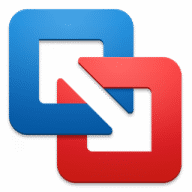Download vmwaretools.rar using safari on mac guest opersting system. Then downlosd unarchiver from appstore. Then open rar file and export vmware.tools to desktop. Once there open vmware tools and Walla!!! If you are a Mac users, so you can download the macOS High Sierra 10.13 from App store but if you are PC user then you’ve got the chance to do it from the guide here. In our previous article, we downloaded the macOS High Sierra VMware Image. Answer (1 of 2): For Mac you'd have to install VMware Fusion. It's a pretty simple installation, just like how you install other applications. Once installed the GUI of Fusion is pretty much similar to the VMware workstation used on Windows.
Device drivers improve sound, graphics, networking, and storage performance. You can select the drivers to be installed while performing a custom VMware Tools installation or reinstallation.
The set of drivers that are installed when you install VMware Tools depends on the guest operating system and the VMware product. For detailed information about the features or functionality of these drivers, including configuration requirements, best practices, and performance, see the documentation for your VMware product. The following device drivers can be included with VMware Tools.
VMware Tools installation include the VMware AppDefense, a security management and monitoring solution. AppDefense agent can be installed on the guest virtual machine using the VMware Tools installer. However, VMware Tools cannot install the AppDefense component automatically. You need to install the component manually.
- NSX File Introspection Driver: The File Introspection driver uses the hypervisor to perform antivirus scans without a bulky agent. This strategy avoids resource bottlenecks and optimizes memory use.
- NSX Network Introspection Driver: The Network Introspection driver supports NSX for vSphere Activity Monitoring.
On Windows guest operating systems whose operating system is Windows Vista or later, the VMware SVGA 3D (Microsoft - WDDM) driver is installed. This driver provides the same base functionality as the SVGA driver, and it adds Windows Aero support.

When you install VMware Tools, a VMXNET NIC driver replaces the default vlance driver.
Vmware Fusion Tools Mac Download Crack
For example, Windows Server 2008 defaults to LSI Logic SAS, which provides the best performance for that operating system. In this case, the LSI Logic SAS driver provided by the operating system is used.
VMware supplies a special SCSI driver for virtual machines that are configured to use the BusLogic virtual SCSI adapter. Virtual machines do not need this driver if they do not need to access any SCSI devices or if they are configured to use the LSI Logic virtual SCSI adapter.
The driver is included as part of the VMware Tools package or comes bundled with VMware ESX/ ESXi. It is available on the host as a floppy image at /vmimages/floppies/vmscsi.flp. The driver can be used in Windows XP, Windows Server 2003, or Windows 2000.

Mac Os Vmware Tools
The drivers for Linux are automatically installed during your operating system installation, eliminating the need to separately install drivers after OS installation. VMware actively maintains the source code for VMware Paravirtual drivers, VMXNET, VMXNET3 and kernel modules, and any Linux distributions creating new OS releases automatically include the latest VMware drivers.
Do not delete or replace existing inbox drivers for Linux that are distributed by your OS vendors. Deleting or replacing these drivers might cause conflict with future updates to the drivers. Contact your OS vendor or OS community for availability of specific updates to drivers.
See http://kb.vmware.com/kb/2073804 for information about availability, maintenance, and support policy for inbox drivers for Linux.
Vmware Fusion Tools Mac Download Full
Vmware Osx Tools
If you use Workstation or Fusion, you can install the Shared Folders component. With Shared Folders, you can easily share files among virtual machines and the host computer. The VMHGFS driver is a file system redirector that allows file system redirection from the guest operating system to the host file system. This driver is the client component of the Shared Folders feature and provides an easy to use alternative to NFS and CIFS file sharing that does not rely on the network. For Linux distributions with kernel version 3.10 and later, a new FUSE based Shared Folders client is used as a replacement for the kernel mode client.